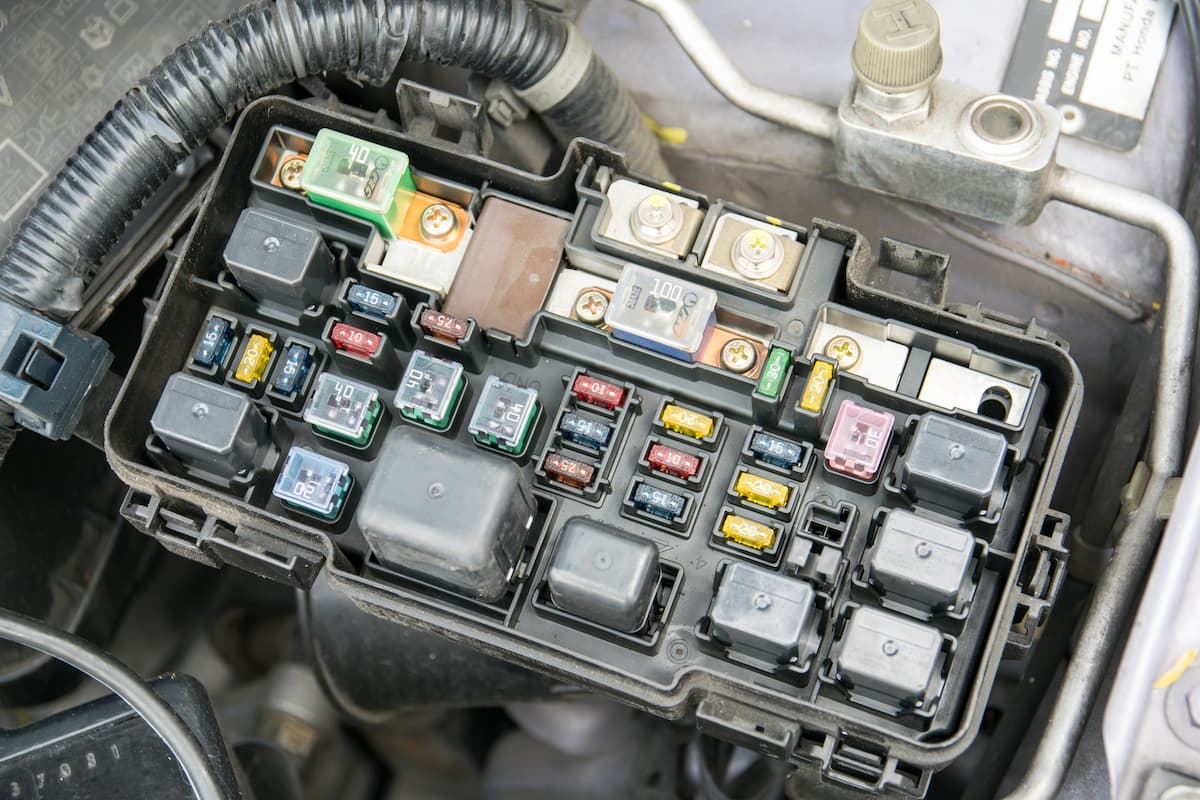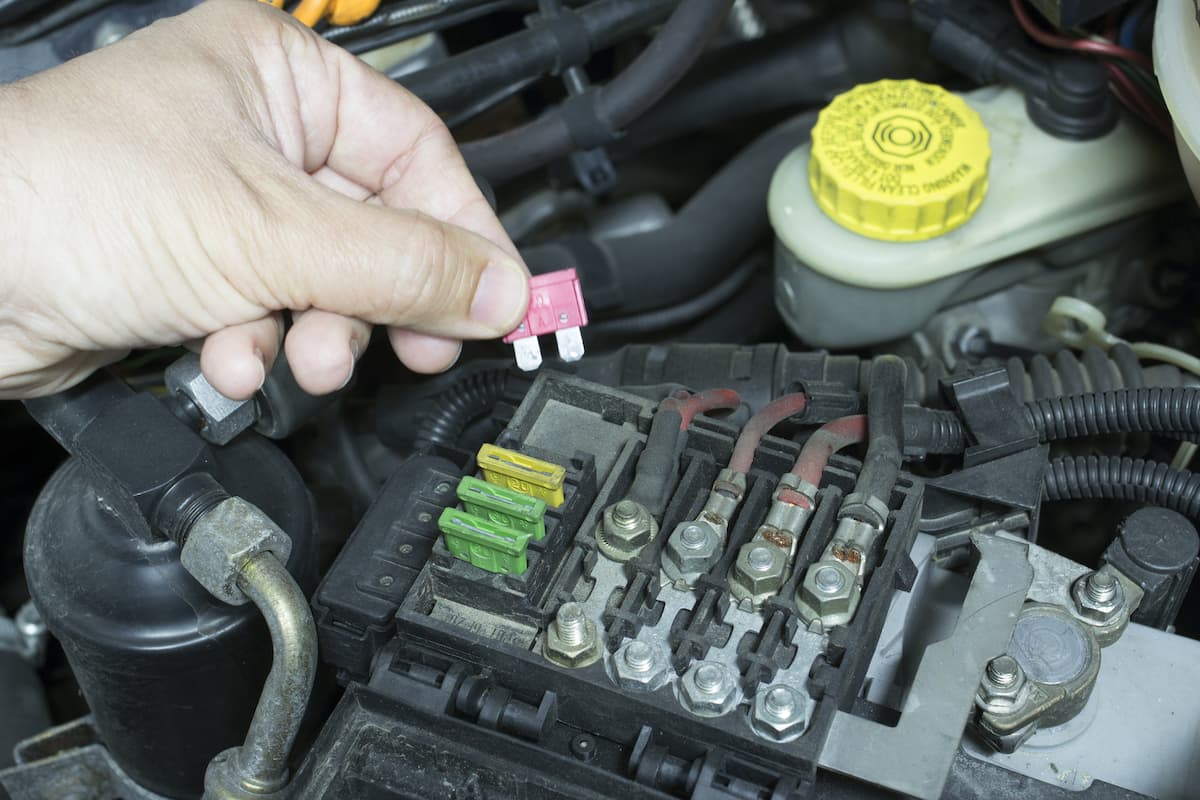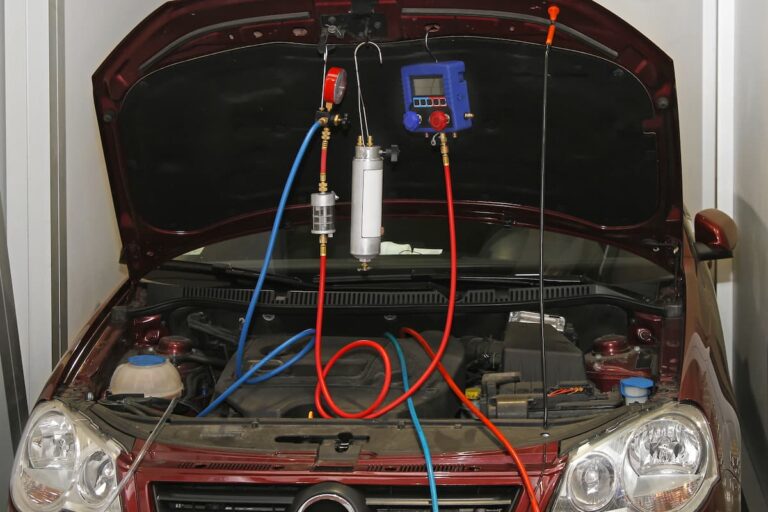Are Car And Motorcycle Fuses The Same?
When your vehicle fuses blow, the fastest solution is replacing them.
If you own a car and a motorcycle, you might wonder if you can use the same fuses in both vehicles.
Car and motorcycle fuses are the same, and you can use them interchangeably without disrupting your vehicle’s circuits. However, the fuses’ amperages must be identical; otherwise, you risk shorting out your electrical system and damaging your vehicle, or worse, starting an electrical fire.
Fortunately, vehicle fuses are color-coded according to amp number, reducing your chances of making a mistake during replacement.
How To Check Fuse Amperage

The amperage of a vehicle fuse is usually imprinted on the plastic covering.
To confirm the number, locate your car or motorcycle’s fuse box, remove the top cover, and find the fuse you want to replace.
If the fuse number isn’t clear or is scratched off, reference your owner’s manual.
If you can’t find your owner’s manual, don’t worry, fuses are color-coded, so you can still find the amperage rating using the following color chart:
- Black – 1 amp
- Gray – 2 amp
- Violet – 3 amp
- Pink – 4 amp
- Tan/Beige – 5 amp
- Brown – 7.5 amp
- Red – 10 amp
- Blue – 15 amp
- Yellow – 20 amp
- Clear (Transparent) – 25 amp
- Green – 30 amp
- Aqua Blue – 35 amp
- Orange – 40 amp
Keep your vehicle’s repair manual on hand if you’ve never replaced a fuse before. Swapping a fuse is fairly straightforward, but double-checking the instructions is always good.
If something seems off or you aren’t confident you can replace the fuse correctly, ask a professional to help you.
Using the Wrong Fuse Amperage
When you use the wrong fuse amperage, you’re using a fuse with a higher or lower amp rating than your vehicle requires for proper functioning.
Every fuse has a purpose, and the amperage required to protect your vehicle’s electrical system is not really negotiable.
However, if you’re in a pinch, you can temporarily replace a car or motorcycle fuse with a lower-rated one. The key word is “temporarily,” as the fuse will blow easily and often, even with a safe current flow.
Relying on a lower-rated fuse leads to frequent replacements and power interruptions. So, to avoid inconveniences, stick to the correct amperage.
A fuse with a higher amp rating poses a lot more risk to your vehicle.
The whole purpose of a fuse is to protect your electrical system from excessive current.
Fuses have a wire strip that melts when there is too much electricity. When the current is too high, the fuse dies and breaks the circuit to prevent damage to the vehicle’s electrical components.
If you use a higher-rated fuse, it will not blow when too much current flows through the circuit.
In the best-case scenario, your electrical system with short. In the worst-case scenario, you can start an electrical fire and cause irreversible damage to critical components in your vehicle.
Ultimately, using the wrong fuse is not worth the risk.
Even if a repair is possible, it won’t be cheap – electrical issues in cars and motorcycles are among the hardest to diagnose.
If your car or motorcycle doesn’t have the correct amperage of fuse you need, buy a new one at your nearest automotive store.
A set of fuses can cost up to $20, but it’s twenty bucks well-spent to avoid a potential disaster.
How To Check for a Blown Fuse

To ensure you aren’t replacing a functioning fuse, take a few steps to confirm its condition.
With a glass fuse, you can tell it’s blown through a simple visual inspection. The fuse will have a black smear from the heat that caused it to blow.
However, it is much harder to tell when the blade-type fuse in cars and motorcycles blows. The wire in these fuses isn’t as visible, so you can’t always see whether it’s intact or not.
To test the plug, you’ll need a special instrument known as a multimeter.
There’s nothing technical about the process, and a multimeter costs upwards of $35.
To test with a digital multimeter, connect it to the fuse and wait for a reading. The fuse is in good condition if the instrument shows low electrical resistance, indicated by a low number like 0.8.
If the tool shows 100% resistance or you have no reading, your fuse is blown, and you need to replace it.
The process is slightly different on an analog multimeter, but it’s still straightforward.
An analog multimeter measures resistance with a needle that moves on a scale. You’ll be able to recognize a functioning fuse if the needle sweeps across the scale, indicating low resistance.
The needle remains in a 100% resistance state if the fuse doesn’t work.
Fuses rarely become defective without blowing. If it does, it’s primarily down to a faulty multimeter test, a manufacturing issue, or a defective fuse-powered component.
Why Your Vehicle Keeps Blowing Fuses
So, you’ve replaced your fuse, but your vehicle keeps blowing it. There are three primary reasons for this.
One is a faulty electrical component.
If you recently tinkered with your car’s electrical system and installed aftermarket equipment, it might be blowing your fuse.
One needs to be attentive when installing aftermarket components as they may not jive with your vehicle’s electrical ratings.
Others may not even be compatible with your vehicle model.
A factory component may also be the culprit in rare cases, and you should call the nearest dealership if your warranty is still valid.
The second main reason for a fuse that won’t last is the wrong amperage, especially lower-rated amperages.
As mentioned, you’re unlikely to damage the vehicle’s electrical components with a lower-rated fuse, but the risks are never zero.
So, while you should use a fuse with the right amperage, check that the power interruptions from the lower-rated fuse didn’t affect other components.
The final reason your fuses keep blowing is an electrical short.
You’ll know if your fuse blows from recently installed aftermarket components or the wrong fuse amperage. An electrical short, however, is harder to find and diagnose.
Any electrical component in your car or motorcycle can cause a short circuit, and you’re better off calling a professional to identify which one.
Conclusion
While you can use car and motorcycle fuses interchangeably, there are some things to keep in mind before you do.
To avoid causing problems with your vehicle, always replace fuses with another of the same amperage. Lower-amp fuses will blow out quickly, and higher-amp fuses pose a fire hazard.
Luckily, electrical companies make it easier by color coding fuses according to their amperage and engraving the amperage ratings on the outside of the casing.
If you still have electrical problems, and replacing a fuse doesn’t solve them, refrain from DIY solutions. Electrical issues in a vehicle can be delicate and easy to mess up, so take your car to a mechanic and let them troubleshoot the problem.






